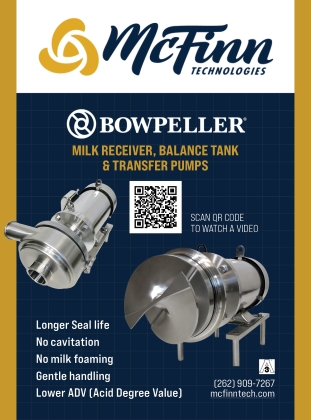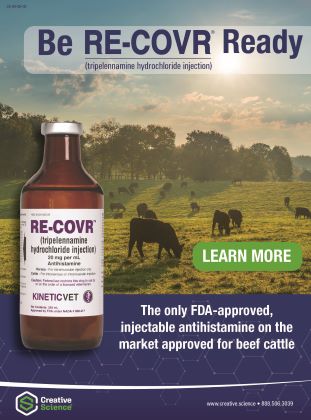Podcasts

Check back for the official launch date of the American Dairymen Podcast. We are excited to roll out the podcast that will be covering just about every topic that concerns the American dairy farmer.
Previous Episodes
Cattlemen & Veterinarians Managing Cattle in Winter Temperatures
Welcome back to Cattlemen & Veterinarians: A Partnership in Bovine Health. Today, Kade and Dr. Peterman discuss some techniques to help take care of your cattle in cold weather. 
The conversation highlights the paramount importance of adequate shelters and bedding for cattle as winter sets in. Dr. Peterman outlines how structures such as barns, three-sided sheds, and even simple windbreaks from natural or man-made materials can help shield herds from biting winds and cold. Good bedding, particularly straw, not only provides insulation but also helps prevent cold-related injuries like frostbite in vulnerable animals. Bed maintenance is discussed, with frequency largely depending on the number of cattle and how rapidly the bedding gets soiled—sometimes daily or weekly.
Nutrition is emphasized as a crucial aspect not to be compromised. Dr. Peterman stresses that cattle should enter winter with an appropriate body condition score, and as the temperature drops, high-energy feeds become vital. She explains that cold stress increases animals’ energy needs, and gradual dietary adjustments should accommodate these demands. Clean, unfrozen water is another critical need, calling for vigilance with ice and heating devices.
The episode further covers health monitoring, spotlighting signs of cold stress and reinforcing the importance of timely vaccinations, particularly for disease prevention in newborn calves. Listeners’ questions lead to advice on managing breed-specific genetic issues in Wagyu cattle, the careful acclimation required when moving cattle from warm to cold climates, and the comparative merits of dry lot wintering versus winter grazing systems. Dr. Peterman recommends nutritional testing and gradual feed changes for supplements like alfalfa and dried distillers grains. She concludes with tips for managing hazards like frozen ground to safeguard cattle health.
Cattlemen & Veterinarians, A Partnership in Bovine Health
For Future or Previous episodes visit our websites:
Cattlemen and Veterinarians: A Partnership in Bovine Health Sponsored by:
A.N. Martin Systems with Lydell Martin
Welcome back to the American Dairymen Podcast. Just ahead, we have Dustin Hector, he’s the host of the American Dairymen Podcast and he chats with Lydell Martin with A.N. Martin Systems. 
Lydell shares his background, starting on a dairy farm and progressing into grain equipment and automation, ultimately leading him to develop innovative roasting systems for A.N. Martin Systems. Though he now works independently, he continues to consult and provide technical support for A.N. Martin Systems, focusing on serving the unique needs of dairy, crop, and feed producers.
The conversation delves into the evolution of soybean roasting in the dairy sector, emphasizing how motivations for roasting have shifted from primarily reducing protein costs to myriad benefits including lowering fat expenses and enhancing milk component production. Lydell highlights the significance of high oleic soybeans, which are notably different from standard varieties due to their lower linoleic acid and higher good fat content, making them more suitable and digestible for dairy herds.
Martin describes various roasting technologies, comparing the advantages and pitfalls of flame, hot air, and auger-type roasters. He explains the development of an advanced system that uses a mixing auger to ensure even roasting and longer retention times at lower temperatures, minimizing fire hazards while maximizing automation and labor efficiency. The system incorporates cooling and milling processes, with a preference for hammer mills over roller mills, allowing for customized grind sizes according to each farm’s requirements and feeding programs. Martin stresses the system’s adaptability and reliability, offering consistent quality while easing operational burdens on producers.
The episode concludes with the recognition that effective automation, safety, and flexibility are driving innovations in grain roasting and dairy nutrition, equipping producers to make more efficient and cost-effective feed choices for their herds.
A.N. Martin
For previous episodes of the American Dairymen visit our website: https://americandairymen.com
American Dairymen Podcast is Sponsored By:
CRV with Dan Hushon and Michele Liston
Welcome back to another episode of the American Dairymen Podcast. Join us as Dustin sits down with Dan Hushon and Michele Liston, two leading experts from CRV, an organization renowned for its forward-thinking approach to dairy herd genetics and management. 
Michele brings over two decades of expertise working with large herds and driving reproductive success across progressive dairies, especially in the Texas Panhandle, sharing her experience in customizing breeding programs that yield long-term results. Dan, with a lifelong background in the dairy industry and years as a genetics consultant across the Mid-Atlantic, shares invaluable stories from his hands-on work with farmers and his deep-rooted commitment to improving herd profitability and sustainability.
This episode dives deep into what sets CRV apart—a unique blend of personalized service for U.S. producers and an unrivaled database of genetic and health information built over more than 150 years in the Netherlands. Listeners will learn how CRV harnesses comprehensive, meticulously documented data to help farmers make informed breeding and management decisions, using proven Dutch genetics to address challenges such as hoof health, locomotion, udder quality, and even specific issues like short teats. Dan and Michele break down the science and the practicalities, illustrating how outcross pedigrees and targeted genetic strategies can improve herd longevity and productivity while reducing health-related downtime.
Whether you’re a dairy professional looking for actionable takeaways, or simply interested in the evolving science of herd management, this episode offers a fascinating glimpse into how tradition, innovation, and global expertise are shaping the next generation of dairy operations.
For previous episodes of the American Dairymen visit our website: https://americandairymen.com
American Dairymen Podcast is Sponsored By:
The Role of The Sale Barn Veterinarian
Welcome back to Cattlemen and Veterinarians: A Partnership in Bovine Health. In this episode we discuss how The Role of The Sale Barn Veterinarian is one of the most essential aspects of bovine healthcare. Our guest today is Dr. Stacy Rugan. Dr. Rugan received her doctorate in veterinary medicine from Kansas State University and is a veterinarian and owner at Animal Clinic P.A., a rural mixed-animal practice in northeast Kansas. Most of her cattle clients are cow-calf or backgrounding feeders. In addition to extensive animal services, Dr. Rugan has a well-established reputation for canine reproductive services. In today’s episode, Dr. Rugan and Dr. Peterman cover a wide range of topics, including: 
Where is your barn located, and what range of cattle do you see mostly?
What is your role as a Veterinarian at the sale barn?
What are you looking for in contagious diseases?
How is it determined which cows get preg checked and which do not?
What animals need eIDs and why?
Why are health papers needed to cross state lines?
What kind of protocol would you follow when buying cows at the Sale Barn before putting them into the herd?
If I am buying calves for backgrounding through a barn, how should I handle calves from different farms?
What is the producer’s responsibility as a buyer or seller in stock health?
Please enjoy this informative discussion. Don’t forget to follow Cattlemen and Veterinarians: A Partnership in Bovine health on your favorite podcast platform so you don’t miss a single episode in the series. Thanks for listening.
The Role of The Sale Barn Veterinarian
Cattlemen & Veterinarians, A Partnership in Bovine Health
For Future or Previous episodes visit our websites:
Cattlemen and Veterinarians: A Partnership in Bovine Health Sponsored by:



